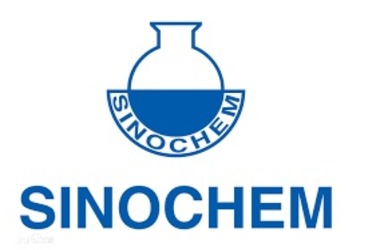 Sinochem, one of the largest chemical manufacturers in China, has rolled out a Blockchain Warehouse Receipt Platform to assist the industry fight the increasing costs of operations and trade funding.
Sinochem, one of the largest chemical manufacturers in China, has rolled out a Blockchain Warehouse Receipt Platform to assist the industry fight the increasing costs of operations and trade funding.
A rise in demand for robust environmental and safety initiatives against the backdrop of the pandemic has further increased costs in China’s petrochemical trade.
Small companies were also facing tough times to fulfill the credit criteria of financiers, as a dearth of able risk handling and issues related to credible monitoring of transaction procedures of bulk commodities have driven financial institutions to implement stringent measures for warehouse funding.
Top business houses in China’s petrochemical trade has now adopted blockchain technology to resolve short comings in supply chain cycle and remove the high financing expenses and postponements that several enterprises go through.
The country’s foremost financing deal over digital warehouse receipt was finished on September 27 utilizing a platform that is powered by blockchain and IoT (Internet of Things) technology combo.
The settlement involved state backed petrochemical giant Sinochem Energy High-Tech, Nanchu Management Group and China Construction Bank Inner Mongolia Branch. Beijing Longrunkaida PEC Products, renowned north China trader in the base oil and lubricant industries, acted as the funder.
As per Sinochem, “From the application for issuance of warehouse receipts to the bank’s appropriation of the loan, it took less than one day with a cost 40% lower than that of common trade finance services in the market.”
The platform resolves the issue of risks such as illegal warehouse receipts, tampered delivery documents, vague goods, recurrent pledges and lost collateral, often causing issues on warehouse receipt funding process. Sinochem vice president Sun Liming detailed how blockchain and IoT technology are utilized to manage these funding “pain points” in the petrochemical distribution chain:
“The [blockchain] Platform is the first to realize strict correspondence between digital warehouse receipts and stored goods. It uses IoT technology to monitor the goods under digital warehouse receipts closely, to ensure that each warehouse receipt directly assures the existence of goods. In addition, the platform realizes swift goods delivery, receipt pledge, as well as integration of ‘four flows’ (the receipt flow, capital flow, contract flow, and goods flow).”
Liming anticipates the high safety offered by blockchain technology, which is tamper proof, and also the enhanced tracking of data in the logistics chain will “greatly improve the industry’s credit rating.”
The advancement and utilization of unique blockchain platform resolves the necessities listed out by eight ministries and commissions in China, including the People’s Bank of China and the Ministry of Industry and Information Technology.
These ministries mandated financial organization and companies with enhancing their data distribution, digitizing supply chain funding settlements and normalizing supply chain inventories and warehouse bills. All these initiatives intend to enhance threat security for supply chain funding and to minimize funding issues, operating and capital expenses for supply chain companies.








